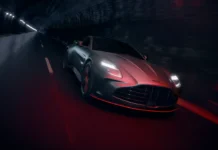Tesla opened up the details for its North American Charging Standard (NACS) connector to everyone.
As electric cars gain momentum in the marketplace, we’ve mainly seen two dominant charger standards emerge in the U.S. You have Tesla’s connector as used with its vehicles and Supercharger network, then you have the SAE J1772 connector. The latter is what you’ll see with most non-Tesla EVs, and in many cases the ports have extra pins as part of the CCS (Combined Charging System) standard to allow DC fast charging up to 350 kW. In a public statement Friday, though, Tesla announced it would open up its formerly proprietary NACS standard for public consumption.
“In pursuit of our mission to accelerate the world’s transition to sustainable energy,” the company says, “today we are opening our EV connector design to the world. We invite charging network operators and vehicle manufacturers to put the Tesla charging connector and charge port, now called the North American Charging Standard (NACS), on their equipment and vehicles.”
Tesla goes on to emphasize that they have the most common charging connector — by way of the automaker’s market dominance in the EV segment — and the benefits of going with NACS over CCS. Crucially, the company notes its connector’s ability to outperform the CCS standard’s DC fast charging rate in a far slimmer package.
What sort of capability can Tesla’s connector currently manage?
Tesla’s V3 Supercharging network provide 250 kW of continuous DC charging power. As for the connector, Tesla’s performance specifications state a maximum rated current of 400 amps, and a nominal voltage of 500 volts. Though, the company released specs and CAD files for a 1,000V connector. Using what’s currently published, that should allow fast charging on the North American Charging Standard up to 400 kW.
However, Tesla says in its statement that NACS can go even farther — perhaps up to 1 Megawatt (1,000 kW) — and does not specify a maximum current rating. A fine point in the technical specifications notes the automaker managed to operate the NACS above 900 amps continuously with “a non-liquid cooled vehicle inlet”.
Apart from touting its market advantages over CCS, Tesla claims its “purely electrical and mechanical interface agnostic to use case and communication protocol” makes the NACS easy for integrators to use. Plus, adopting that connector will ostensibly allow Tesla owners to charge outside the Supercharger network without an adapter and vice versa.
Will this prompt everyone to switch to Tesla’s standard? Only time will tell, though the company says its “working with relevant standards bodies” to codify NACS into a public standard.
Tesla’s NACS files are available for download here.





























